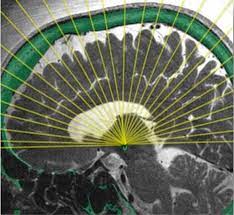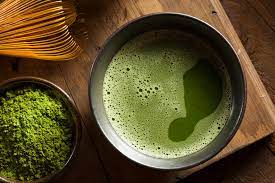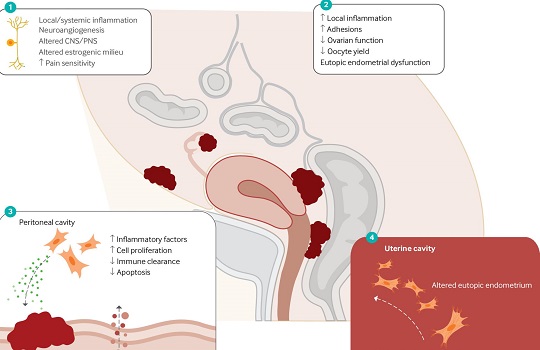Common sweetener in high doses may suppress immune system.
According to a recent study, sucralose, an artificial sweetener, lowers immunological responses in mice when given in large amounts. In particular, it lessens their T cells’ level of activation. Researchers emphasise that sucralose ingestion by humans in usual amounts is unlikely to be detrimental.

Researchers plan to investigate if this popular sweetener could be utilised to calm down overactive immune systems in the future in high doses.
Sucralose, which goes by the brand name Splenda, is one of several artificial sweeteners that have been given the go-ahead for usage in the US. The sugar substitute has 600 times more sweetness than regular sugar.
Sucralose was given the go-ahead by the US Food and Drug Administration in 1999 to be used as a general-purpose sweetener for food.
In order to better understand how nutrition affects disease, Dr. Karen Vousden’s team at the Francis Crick Institute in London decided to study sucralose. She is a specialist in cancer biology.
“Sweetener consumption is rising quickly around the world, and comprehensive research by numerous regulatory bodies have demonstrated that they are safe at levels of usual consumption,” she said.
There have been reports in recent years suggesting that sweeteners may have more impacts than previously believed, including an impact on the gut flora. Hence, we conducted a study to examine these sweeteners’ impact on mice. Karen Vousden, Ph.D.
They recently had a publication about their study appear in Nature. It indicates the scientists discovered that sucralose lowers mice’s immune systems when taken in large dosages.
Recommended sucralose consumption
Sucralose has an acceptable daily intake (ADI) of 5 milligrammes per kilogramme of body weight per day, as set by the FDA. It has an ADI set by the European Food Safety Authority (EFSA) of 15 mg per kg of body weight per day.
Sucralose amounts to 12 milligrammes every packet of Splenda. In the United States, a person weighing 150 pounds can consume 340 mg of sucralose per day and still meet the ADI.
The researchers provided mice with access to water that was comparable to the ADI suggested by the EFSA (.72 mg) and the FDA for rodents for the experiments they conducted for their study (.17 mg).
Higher doses of sucralose
In order to examine the potential impact of sucralose on the immune system, the researchers conducted a number of laboratory tests on the T cells, a subset of white blood cells, of mice and people.
In one experiment, scientists fed mice either 0.17 or 0.72 mg of sucralose or sodium saccharin, a chemically unrelated sweetener (NaS). For several cell types, neither the amount of sucralose nor the presence of NaS had any discernible impact.
Another experiment assessed the homeostatic expansion of donor T cells in mice that were given sucrose but were unable to develop mature T cells or B cells. The growth of vital adaptive immune system cells was only prevented by sucralose.
Overall, results from numerous studies indicated that high sucralose exposure reduces T cell proliferation and differentiation.
Dr. Vousden, the senior author of the study, told that the team was shocked that “the effect was so evident across several mice models” due to sucralose’s poor absorption.
Sucralose did not appear to affect the activity of other immune cells, which shocked her team as well. “We were also startled to discover such a particular effect of sucralose on T-cells — none of the other sweeteners had this effect,” she said.
Effects of sucralose
Sucralose or NaS administration to mice for up to 12 weeks did not influence their dietary habits or body weight, according to the research. It also had no discernible impact on the mice’s fasting insulin levels or glucose tolerance.
Sucralose has been demonstrated to have an impact on the gut microbiota in certain studies, including one from 2008. But, in this most recent publication, researchers found “no consistent alteration in the bacterial species” in the mice given sucralose-treated stools.
The researchers also opted to investigate the medicinal potential of sucralose in the management of autoimmune diseases. They did this by administering sucralose to NOD (nonobese diabetic) mice.
According to Vousden, sucrose does not necessarily have a detrimental impact on the immune system. The findings suggest that the sweetener might one day be utilised therapeutically to treat autoimmune diseases, according to her.
The researchers treated mice that were engineered to be predisposed to type 1 diabetes, an autoimmune disorder that induces T cells to assault pancreatic cells, excessive dosages of the sweetener to test this notion in animals. Just approximately a third of the mice given the sweetener acquired diabetes after about 30 weeks; in contrast, all of the animals given simply water got the disease.
In the event that human studies reveal a similar outcome, according to Zani, he could imagine the sweetener being used in conjunction with more traditional immunosuppressive medications. As a result, doctors might be able to reduce the dosages of these medications. Walther believes that this line of enquiry is promising, particularly in light of the fact that sucralose is inexpensive to produce and would have less negative side effects.
long-term use of sucralose
In a 2018 study, Dr. Fabio Cominelli of Case Western Reserve University School of Medicine in Ohio discovered that sucralose consumption by mice may negatively affect the intestinal flora. Dr. Cominelli is the director of the Digestive Health Research Institute.
Dr. Cominelli, who was not involved in the current study, stated that he was unsure of the reason why the microbiome did not undergo significant changes as reported by the researchers.
He did, however, draw MNT’s attention to the fact that the rodent testing relied on doses of the sweetener that are far greater than what humans generally ingest, meaning that the article may not be relevant to scientists interested in the long-term effects of sucralose on humans.
REFERENCES:
- https://www.medicalnewstoday.com/articles/common-sweetener-in-high-doses-may-suppress-immune-system-mice-study-suggests
- https://www.nature.com/articles/d41586-023-00784-w
- https://www.ft.com/content/c4ccd2a3-da66-487d-9dc3-f0be9c7c91c9
- https://www.thenationalnews.com/health/2023/03/16/artificial-sweetener-in-diet-soft-drinks-suppresses-t-cell-immune-system/
For more details, kindly visit below.








